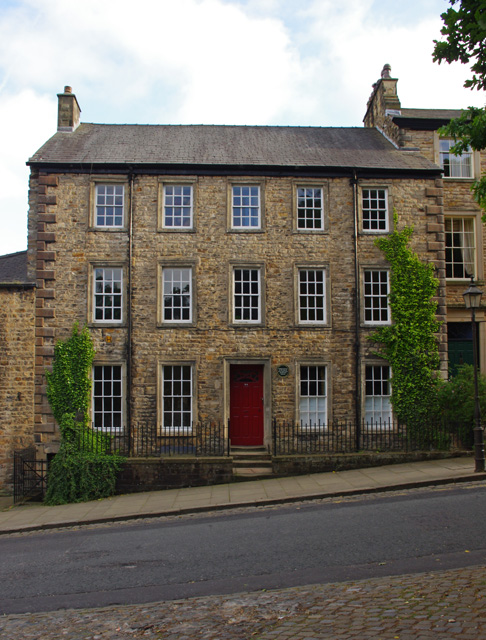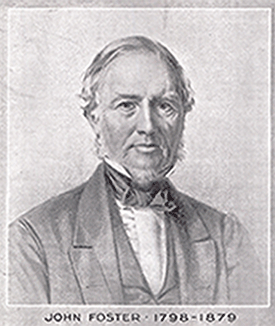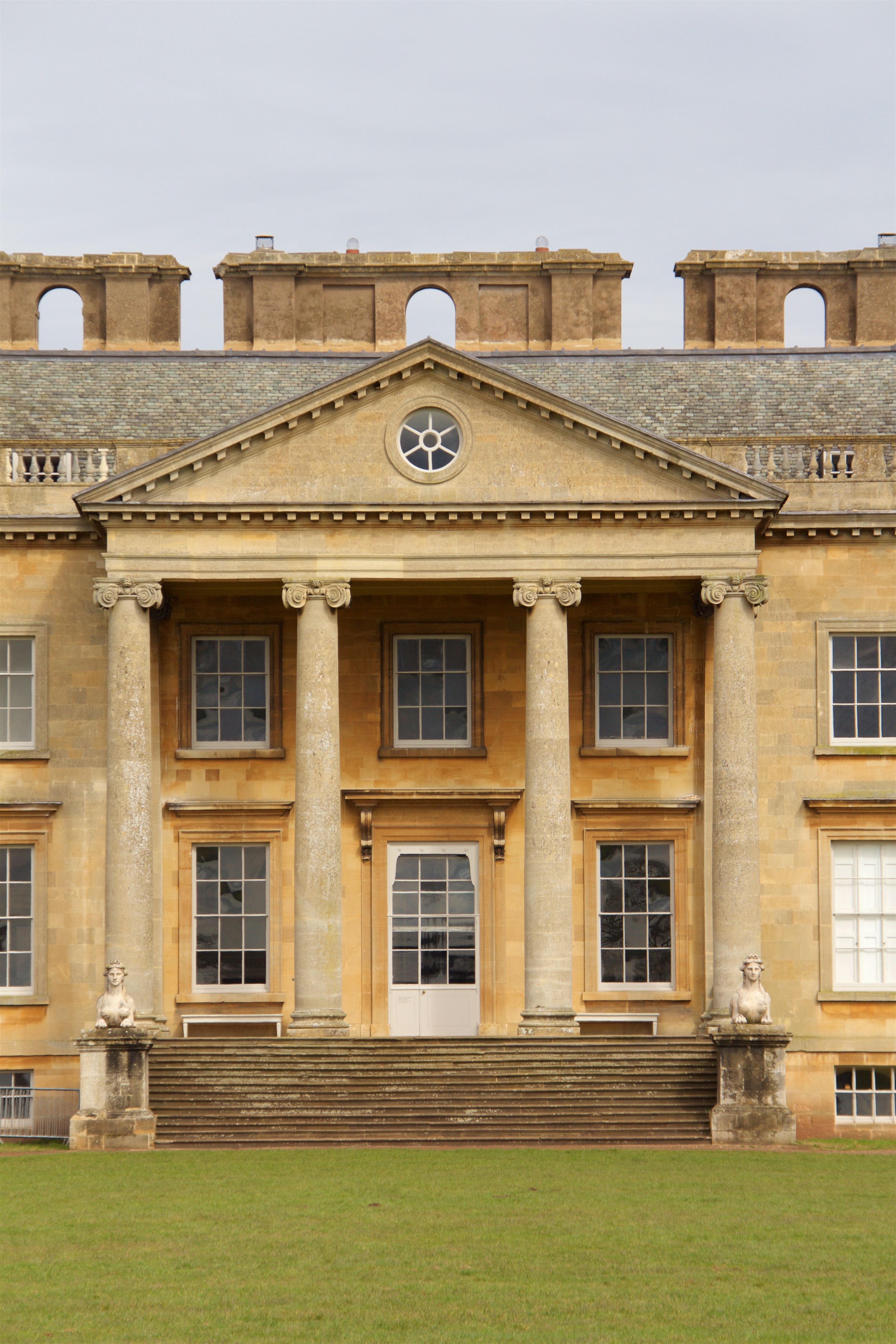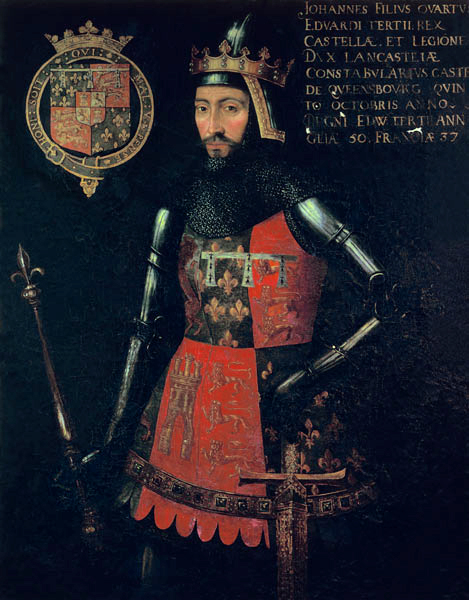|
Hornby Castle, Lancashire
Hornby Castle is a country house, developed from a medieval castle, standing to the east of the village of Hornby in the Lune Valley, Lancashire, England. It occupies a position overlooking the village in a curve of the River Wenning. The house is recorded in the National Heritage List for England as a designated Grade I listed building. History It is thought that the castle was originally built for the Neville family in the 13th century; this is the most likely date of the base of the tower at the back of the castle. In 1285 Margaret de Neville was the owner and "had writ for livery" at Hornby Castle. The polygonal tower rising from this base dates from the 16th century, and was built probably for Sir Edward Stanley, 1st Baron Monteagle. His son, the second Baron Monteagle, took part in suppressing the Rising of the North in 1536. The third Baron Monteagle sold off a lot of the land and on his death in 1581 was succeeded by an only daughter, Elizabeth, who ... [...More Info...] [...Related Items...] OR: [Wikipedia] [Google] [Baidu] |
Hornby-with-Farleton
Hornby-with-Farleton is a civil parish in the City of Lancaster in Lancashire, England. It had a population of 729 recorded in the 2001 census, increasing marginally to 730 at the 2011 census. The parish is about north-east of Lancaster and consists of two villages: Hornby and Farleton, both on the A683 road. The parish was formed 24 March 1887 from the parishes of "Hornby" and "Farleton". Farleton Farleton is located south of the main A683 road. The Toll House, a Grade II listed building was, in the 1920s, a garage. See also *Listed buildings in Hornby-with-Farleton Hornby-with-Farleton is a Civil parishes in England, civil parish in City of Lancaster, Lancaster, Lancashire, England. It contains 37 Listed building#England and Wales, listed buildings that are recorded in the National Heritage List for England ... * Hornby Priory References External links Hornby-with-Farleton Parish Council website [...More Info...] [...Related Items...] OR: [Wikipedia] [Google] [Baidu] |
Edward Parker, 12th Baron Morley
Edward Parker, 12th Baron Morley (c. 1550 – 1618) was an English peer, Lord of Morley, Hingham, Hockering, &c., in Norfolk, the son of Henry Parker, 11th Baron Morley and Lady Elizabeth Stanley. His second daughter was Frances Danby. His first wife was Elizabeth Stanley (daughter of William Stanley, 3rd Baron Monteagle and Anne Leybourne); their children were * William Parker, 13th Baron Morley (Lord Monteagle of the Gunpowder Plot fame) * Frances Parker, wife of Christopher Danby of Thorpe Perrow, Yorkshire, and of Farnley, Leeds, West Riding of Yorkshire. The 1607 marriage of his daughter Frances to Christopher Danby was confused. Danby had been promised £1,000 as part of the marriage arrangements. However the £1,000 never arrived and as a result Danby did not live full time with his wife. Three children were born but the couple remained in dispute. Frances was accused of recusancy and before her died Danby sent a son away to school with instructions that the son's mot ... [...More Info...] [...Related Items...] OR: [Wikipedia] [Google] [Baidu] |
William Henry Foster (Lancaster)
Colonel William Henry Foster (1848 – 27 March 1908) was a British businessman and Conservative Party politician, who owned the Black Dyke Mills in the West Riding of Yorkshire and lived in Hornby Castle in Lancashire. He sat in the House of Commons from 1895 to 1900. Career Foster was the son of William Foster, of Hornby Castle, Lancashire and of Queensbury, near Bradford in the West Riding of Yorkshire. He was educated in Liverpool and abroad, and entered the family's textile business, becoming a director in 1842 of John Foster and Son Ltd in Queensbury, and other businesses. The family's Black Dyke Mills, which dominated the village of Queensbury, became one of the world's largest makers of worsted cloth. The firm had been founded by his grandfather John Foster (1798–1879), who had retired to Hornby Castle and passed the company to his son William (1821–1884). Foster was appointed as High Sheriff of Lancashire in June 1891, after the death of George Preston, an ... [...More Info...] [...Related Items...] OR: [Wikipedia] [Google] [Baidu] |
Bradford
Bradford is a city and the administrative centre of the City of Bradford district in West Yorkshire, England. The city is in the Pennines' eastern foothills on the banks of the Bradford Beck. Bradford had a population of 349,561 at the 2011 census; the second-largest population centre in the county after Leeds, which is to the east of the city. It shares a continuous built-up area with the towns of Shipley, Silsden, Bingley and Keighley in the district as well as with the metropolitan county's other districts. Its name is also given to Bradford Beck. It became a West Riding of Yorkshire municipal borough in 1847 and received its city charter in 1897. Since local government reform in 1974, the city is the administrative centre of a wider metropolitan district, city hall is the meeting place of Bradford City Council. The district has civil parishes and unparished areas and had a population of , making it the most populous district in England. In the century leadin ... [...More Info...] [...Related Items...] OR: [Wikipedia] [Google] [Baidu] |
Paley And Austin
Sharpe, Paley and Austin are the surnames of architects who practised in Lancaster, Lancashire, England, between 1835 and 1946, working either alone or in partnership. The full names of the principals in their practice, which went under various names during its life, are Edmund Sharpe (1809–77); Edward Graham Paley (1823–95), who practised as E. G. Paley; Hubert James Austin (1841–1915); Henry Anderson Paley (1859–1946), son of Edward, usually known as Harry Paley; and, for a very brief period, Geoffrey Langshaw Austin (1884–1971), son of Hubert. The firm's commissions were mainly for buildings in Lancashire and what is now Cumbria, but also in Yorkshire, Cheshire, the West Midlands, North Wales, and Hertfordshire. The practice specialised in work on churches; the design of new churches, restoring older churches, and making additions or alterations. They also designed country houses, and made alterations to existing houses. Almost all their churches w ... [...More Info...] [...Related Items...] OR: [Wikipedia] [Google] [Baidu] |
John Foster (textile Manufacturer)
John Foster (1798–1879) was a British manufacturer of worsted cloth. He was the son of a colliery owner and farmer in Bradford, West Yorkshire. In 1819 he married Ruth Briggs, daughter of a landowner from Queensbury, on the outskirts of Bradford. He set up in business the same year in a warehouse in Queensbury on what would later be the site of the Black Dyke Mills. Initially he would buy yarn and distribute it to handloom weavers who would sell back the finished cloth. By 1827 he was successful enough to build Prospect House as a family home. In 1828 he rented Cannon Mill for wool spinning, prior to erecting the first part of Black Dyke Mills in 1835 on land acquired from his father-in-law. By 1851 Black Dyke Mills was dominating the Queensbury landscape and at the Great Exhibition of that year he was awarded first prize for alpaca and mohair fabrics and the gold medal for yarns. In the 1870s he bought and renovated Hornby Castle, Lancashire, to which he retired. On his ... [...More Info...] [...Related Items...] OR: [Wikipedia] [Google] [Baidu] |
English Heritage
English Heritage (officially the English Heritage Trust) is a charity that manages over 400 historic monuments, buildings and places. These include prehistoric sites, medieval castles, Roman forts and country houses. The charity states that it uses these properties to "bring the story of England to life for over 10 million people each year". Within its portfolio are Stonehenge, Dover Castle, Tintagel Castle and the best preserved parts of Hadrian's Wall. English Heritage also manages the London Blue Plaque scheme, which links influential historical figures to particular buildings. When originally formed in 1983, English Heritage was the operating name of an executive non-departmental public body of the British Government, officially titled the Historic Buildings and Monuments Commission for England, that ran the national system of heritage protection and managed a range of historic properties. It was created to combine the roles of existing bodies that had emerged from a long ... [...More Info...] [...Related Items...] OR: [Wikipedia] [Google] [Baidu] |
Portico
A portico is a porch leading to the entrance of a building, or extended as a colonnade, with a roof structure over a walkway, supported by columns or enclosed by walls. This idea was widely used in ancient Greece and has influenced many cultures, including most Western cultures. Some noteworthy examples of porticos are the East Portico of the United States Capitol, the portico adorning the Pantheon in Rome and the portico of University College London. Porticos are sometimes topped with pediments. Palladio was a pioneer of using temple-fronts for secular buildings. In the UK, the temple-front applied to The Vyne, Hampshire, was the first portico applied to an English country house. A pronaos ( or ) is the inner area of the portico of a Greek or Roman temple, situated between the portico's colonnade or walls and the entrance to the ''cella'', or shrine. Roman temples commonly had an open pronaos, usually with only columns and no walls, and the pronaos could be as long as th ... [...More Info...] [...Related Items...] OR: [Wikipedia] [Google] [Baidu] |
Lancaster, Lancashire
Lancaster (, ) is a city and the county town of Lancashire, England, standing on the River Lune. Its population of 52,234 compares with one of 138,375 in the wider City of Lancaster local government district. The House of Lancaster was a branch of the English royal family. The Duchy of Lancaster still holds large estates on behalf of Charles III, who is also Duke of Lancaster. Its long history is marked by Lancaster Castle, Lancaster Priory Church, Lancaster Cathedral and the Ashton Memorial. It is the seat of Lancaster University and has a campus of the University of Cumbria. The Port of Lancaster played a big role in the city's growth, but for many years the outport of Glasson Dock has become the main shipping facility. History The name of the city first appeared in the Domesday Book of 1086, as ''Loncastre'', where "Lon" refers to the River Lune and "castre" (from the Old English ''cæster'' and Latin ''castrum'' for "fort") to the Roman fort that stood on the site. Ro ... [...More Info...] [...Related Items...] OR: [Wikipedia] [Google] [Baidu] |
High Sheriff Of Lancashire
The High Sheriff of Lancashire is an ancient officer, now largely ceremonial, granted to Lancashire, a county in North West England. High Shrievalties are the oldest secular titles under the Crown, in England and Wales. The High Sheriff of Lancashire is the representative of the monarch in the county, and is the "Keeper of The King's Peace" in the county, executing judgements of the High Court through an Under Sheriff. Throughout the Middle Ages, the High Sheriff was a powerful political position; the sheriffs were responsible for the maintenance of law and order and various other roles. Some of its powers were relinquished in 1547 as the Lord Lieutenant of Lancashire was instated to deal with military duties. It was in 1908 under King Edward VII of the United Kingdom that the Lord Lieutenant position became more senior than the High Sheriff. Since that time the High Sheriff has broadly become an honorific title, with many of its previous roles having been taken up by High Cour ... [...More Info...] [...Related Items...] OR: [Wikipedia] [Google] [Baidu] |
Wennington Hall
Wennington Hall is a former country house in Wennington, a village in the City of Lancaster district in Lancashire, England. The house is a Grade II listed building and was occupied by Wennington Hall School until 31st of August 2022, the site is now subject to tender, after the LEA were unable to secure academic status. History In its early history, Wennington Hall was the seat of William de Wennington. and in the 14th century, it passed to the Morley family. In 1674 the hall was sold to Henry Marsden, MP for Clitheroe. It descended to Henry Marsden, who lived at the hall with his younger brother John, known as "Silly Marsden", and their aunt. Henry died in 1780 from alcoholism and John was induced by his guardian aunt and her ambitious husband to sell the hall and buy Hornby Castle, Lancashire. Wennington was bought in 1788 by the Rev Anthony Lister, who took the surname Marsden. The hall was later sold to Richard Saunders in 1841. The present building on the site, des ... [...More Info...] [...Related Items...] OR: [Wikipedia] [Google] [Baidu] |
James Wemyss, 5th Earl Of Wemyss
James Wemyss, 5th Earl of Wemyss (30 August 169921 March 1756) was the son of David Wemyss, 4th Earl of Wemyss. On 17 September 1720, he married Janet Charteris, heiress of the great Colonel Francis Charteris, and they had four children: * David Wemyss, 6th Earl of Wemyss (1721–1787) *Francis Charteris, 7th Earl of Wemyss Francis Wemyss Charteris (21 October 172324 August 1808) was a Scottish landowner who claimed to be 7th Earl of Wemyss. Life Charteris was the second son of James Wemyss, 5th Earl of Wemyss and his wife Janet, daughter of the very wealthy Colo ... (1723–1808) * James Wemyss (1726–1786) *Frances Wemyss (died 1789) In 1730, he was key to securing the release his father-in-law from Newgate Prison after he was sentenced to hang for the capital felony of rape. His second son, Francis, the seventh Earl, legally changed his name to Charteris, his mother's maiden name, on his inheritance of Colonel Charteris's estates and fortune built upon g ... [...More Info...] [...Related Items...] OR: [Wikipedia] [Google] [Baidu] |




.jpg)

